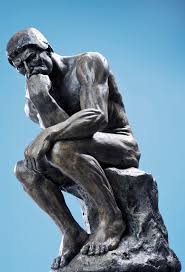The role of women in Israeli society is not a simple issue to discuss.
First, there are two conservative blocks – the ultraorthodox and Arab sectors – which are traditionally very conservative in outlook. And the important role of the army in day-to-day life, albeit that many more combat positions are now available to women, is another limiting factor.
Just recently, much has been made about the lack of women in senior roles in the political system. This is especially pertinent since elections are coming up. In fact, the World Bank ranks Israel as only 76th in gender equality.
However, all is not doom and gloom. Most of the senior positions in the banking system are held by women. The JLM-BioCity Event this week hosted ten female leaders in the field of pharma and biotech. Forbes is blazing another trail with its first Under 30 Summit for Women, to be held March 31-April 4 in Tel Aviv and Jerusalem. Meanwhile, one enterprising blogger attests to six Israeli women with a mission to change the world for the better. And it does look as if Druze women will finally have a rep the Israeli Parliament.
Clearly much is still to be done. However, I will leave the last word with the Israeli Central Bureau of Statistics, which released a mountain of info to commemorate the day. (And I quote in full).
International Women’s Day 2019
Central Bureau of Statistics annual report
The statistics in this report are mostly from the year 2017.
• Female population in Israel at end of 2017 – 4,433,560 (out of about 8.9 million total population), of whom 27.3% were age 14 and younger, and 12.8% were over age 65.
• The average age of giving birth to a first child rose in the last decade, from 26.8 in 2006 to 27.6 in 2017
• Fertility rate of women in Israel: 3.11 children, compared to OECD average of 1.7.
• Babies born to single mothers accounted for 5.3% of all Jewish babies born in 2017.
• Life expectancy for women in Israel is 84.6 (compared to 80.7 for men), a rise of 2.2 years in the decade 2007-2017, compared to 2 years among men.
• Overweight: Age 20 and older, 40.9% of women and 55.4% of men were overweight.
Education
• Among 12th-graders, more girls than boys were eligible for a matriculation certificate – 70.9 % compared to 59.2% respectively.
• Among Arabs, the disparity between male and female 12th-graders is greater. Of those fulfilling the qualifications to enter university, 56.6% were women and 37.8% men.
• In the 2017/18 academic year, 59% of university students were women. Compare with 1969/70, when less than half of the students were women.
• Among Arab students, 68.9% were women.
• Percentage of women among academic students: 58.4% of BA students, 62.2% of MA students, 52.8% of doctoral students, and 74.3% of diploma students.
• Women constituted over 80% of the students in paramedical professions and education, and only 30-35% of the students in physical sciences, engineering, mathematics and computer sciences.
Employment 2018
• Participation in the labour force of women age 15 and over was 59.8%, compared to 68.2% of the men. More men than women were employed full-time. Among both men and women, the unemployment rate was about 4%.
• Women constituted 56.3% of employees in academic fields, and 33.8% of managerial positions were filled by women. 34% of hi-tech workers were women.
• 90% of working women are satisfied with their jobs, but only 56% are satisfied with their salaries.
• Since 2007, the gender-based disparity in income decreased for salaried workers, but increased or was unpredictable among the self-employed.
• Among married couples, in 67.2% of one-income households, the wage-earner is male. Among Arabs, the percentage is even higher. Among the ultra-orthodox, the reverse is true – in 76.8% of one-income households, the wage earner is the woman.
• Of 34,200 people tried for criminal offenses, 7.5% of them were women.
• Licensed drivers in 2018: among the Jewish population, 45% of licensed drivers were women; among the Arab population, 38% (a rise from 31% in 2008).


